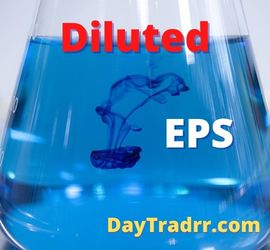What is Water ETF?
 A water ETF can be a convenient way to gain exposure to the water industry with one fund. A typical water ETF invests in water utilities and companies involved in water purification and distribution. However, it can encompass the entire water delivery industry including sewer and pipeline construction, and related equipment.
A water ETF can be a convenient way to gain exposure to the water industry with one fund. A typical water ETF invests in water utilities and companies involved in water purification and distribution. However, it can encompass the entire water delivery industry including sewer and pipeline construction, and related equipment.
The world’s freshwater supply is limited. Demand will grow as the population increases and as more people move into the middle class. In the U.S., huge amounts of money need to be spent to upgrade the largely old and deteriorating water infrastructure. In many parts of the developing world, the initial infrastructure needs to be put in place. If you’re interested in water stocks but don’t want to bet on just one or two players in this broad space, you have another option. A Water ETF (exchange-traded fund). Water ETFs invest in a basket of companies that realize significant revenue from water infrastructure, water management, water purification. Investors seeking investments to diversify their portfolios may be drawn to water stocks and water ETFs. The companies produce high earnings growth and pay dividends. In the current market environment, some investors are on the hunt for nontraditional investments to decrease risk.
Water Scarcity Continues Rising Globally
Water may seem like a limitless resource, considering that 80% of the planet is covered in it. But freshwater, the kind that we need for drinking, farming, and sustaining life itself, isn’t infinite. In fact, the World Wildlife Fund estimates that by 2025, two-thirds of the world’s population may face water shortages. The United Nations believes that more than 2 billion people are living in countries that are already experiencing the impact. Things like high water stress, climate change, a rising global population, increased demands from agriculture, and the expansion of urban areas. All these elements are contributing factors that will only heighten that stress in the coming years. With water, scarcity comes a number of opportunities. Forward-thinking investors are investing in water including utilities, water treatment companies, and, as of Dec. 7, water futures.
(Source: usnews.com)
How to invest in Water ETF, Water Shares, and Water CFDs
There are multiple ways to invest in water. You can buy shares of companies that produce water-related equipment, such as pumps, meters, and filters. Or, you can invest in water utilities and environmental companies that clean, purify, and distribute water. You can also trade exchange-traded funds (ETFs), CFDs, and spread bets on the price movements of these assets.
Water ETF
Investing in water ETFs could be a convenient way to start investing within the water industry with one single fund. Water ETFs work by holding shares in companies involved in water purification, pipeline, construction, and other related equipment. Investing in water ETFs has numerous benefits such as diversification, passive management, and low expenses. However, leveraged ETFs are complex financial instruments that carry significant risks. Certain leveraged ETFs are only considered appropriate for experienced traders.
Water shares
The market offers a variety of water utility stocks from all over the world. However, drinking water stocks should be thoroughly evaluated before investing. Water companies are subject to natural forces. There can be times of shortage and financial debt. Therefore, interest rates should also be carefully assessed. It is preferable to invest in companies that demonstrate a higher level of stability. Furthermore, when investing in a geographically diverse portfolio, traders should closely monitor exchange rates. Foreign currencies, such as the US dollar, the British pound, or the Chinese yuan can be subject to unpleasant depreciation.
Water CFDs
Another way to invest in water is through CFD trading (contracts for difference). The advantage of CFDs is that traders can gain long or short exposure to share prices without necessarily having to purchase shares or ETFs. Instead, traders can speculate on the price movements of the underlying asset through opening a position. If the market moves in your favor, profits will ensue. But, if the market moves in an opposing direction, this will result in losses.
(Source: cmcmarkets.com)
Water ETF – Top Performing Funds
The best-performing water ETF based on performance over the past year is the Invesco Water Resources ETF (PHO). The top 3 water ETFs were measured by 1-year trailing total returns below. All numbers are as of October 30, 2020.
Invesco Water Resources ETF (PHO)
- 1-Year Trailing Total Returns: 11.2%
- Expense Ratio: 0.60%
- Annual Dividend Yield: 0.44%
- 3-Month Average Daily Volume: 49,753
- Assets Under Management: $1.1 billion
- Inception Date: December 6, 2005
- Issuing Company: Invesco
Invesco Global Water ETF (PIO)
- 1-Year Trailing Total Returns: 9.3%
- Expense Ratio: 0.75%
- Annual Dividend Yield: 0.91%
- 3-Month Average Daily Volume: 11,017
- Assets Under Management: $209.1 million
- Inception Date: June 13, 2007
- Issuing Company: Invesco
PIO is a multi-cap ETF that tracks that, like PHO, tracks the NASDAQ OMX Global Water Index. The ETF focuses on water utilities and infrastructure companies, as well as water equipment and materials companies. PIO offers targeted exposure to investors who may believe that scarcity issues may prompt a sudden, short-term increase in demand for water treatment companies, boosting the earnings and share prices of these companies. Thus, analysts say it may not belong in a long-term portfolio. The fund’s top three holdings include Danaher Corp.; Ecolab Inc.; and Geberit AG (GEBN), a maker and supplier of water supply pipes, fittings, drainage, and flushing systems.
First Trust ISE Water Index Fund (FIW)
- 1-Year Trailing Total Returns: 9.0%
- Expense Ratio: 0.55%
- Annual Dividend Yield: 0.54%
- 3-Month Average Daily Volume: 21,395
- Assets Under Management: $552.3 million
- Inception Date: May 11, 2007
- Issuing Company: First Trust
FIW is a multi-cap ETF that invests in U.S. equities of varying market caps. It tracks the ISE Water Index, which is primarily focused on companies that get a large share of their revenue from the potable and wastewater industry. The fund follows a blended strategy, investing in both growth and value stocks. The fund’s top three holdings include Xylem Inc. (XYL), a maker of water and wastewater pumps, valves, heat exchangers, and treatment and testing equipment; Algonquin Power & Utilities Corp. (AQN), a renewable energy generation company with water distribution and wastewater facilities; and Danaher Corp.
(Source: investopedia.com)
What Moves the Markets for Water ETF and Water Stocks?
Water stocks tend to be unaffected by most events that can dramatically affect share prices of other types of businesses. Still, there are a number of things that can have a material effect on their share prices:
Regulatory environment
The stability of water stocks is derived from the fact that their activities are regulated. Any changes to the regulatory environment can therefore have a dramatic effect on the investment case. For example, the UK’s water regulator Ofgem sets price limits every five years and any changes can have a profound effect on the industry’s profitability. Politics can also cause dramatic effects on water stocks. Fears have been growing for UK water stocks after the opposition Labour party promised to renationalize them.
Financial results
Releasing financial results can impact share prices of water stocks just like any other company. This is when shareholders find out how well the company has performed and when they can compare each stock in the market. There is rarely a big difference between each water utility, so one outperforming another can be a big deal. The dividend, although often known in advance, is also confirmed when results are released.
(Source: ig.com)
Day trading can be summarized simply as buying security. Then, quickly selling or closing out the position within a single trading day. Ideally, a day trader wants to “cash-out” by the end of each day with no open positions to avoid the risk of losses by holding security overnight. Day trading is not for everyone and carries significant risks. It requires an in-depth understanding of how the markets work and various strategies for profiting in the short term. Short term profits require a very different approach compared to traditional long term, buy and hold investment strategies.




